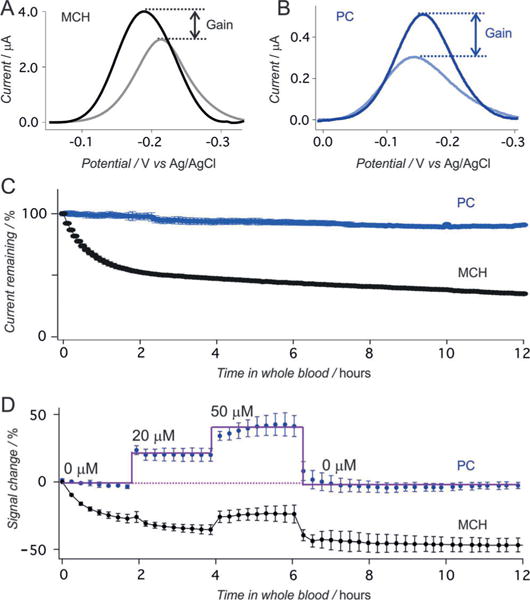Figure 2.

Doxorubicin-detecting E-AB sensors. A) Voltammograms recorded from MCH-based sensors in the absence and presence of target in PBS buffer. The signaling current increases by ca. 35% when the sample is spiked with 10 μm target. B) Under the same conditions a PC-based sensor exhibits higher signal gain, with the current increasing by ca. 65%. C) When challenged in flowing whole blood (no doxorubicin), PC-based sensors (blue) exhibit less than 10% current drift over 12 h, whereas MCH-based sensors (black) lose around two thirds of their original signal. D) The improved drift performance of the PC-based sensors allows real-time measurements in whole blood. Shown are data collected in flowing whole blood samples in vitro spiked at different time points with varying concentrations of doxorubicin. Error bars show the standard deviation of at least three independently fabricated sensors.
